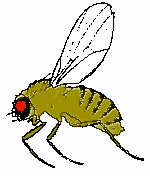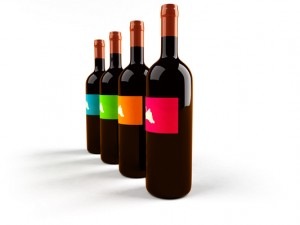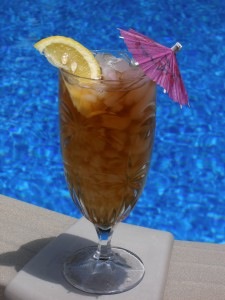 Walk into your kitchen – and there they are — swarming around your ripening peaches or bananas. Don’t those eighth of an inch little red-eyed fruit flies (but really, can you get up front and personal to see their red eyes?) drive you nuts?
Walk into your kitchen – and there they are — swarming around your ripening peaches or bananas. Don’t those eighth of an inch little red-eyed fruit flies (but really, can you get up front and personal to see their red eyes?) drive you nuts?
Where, oh where, did they come from – and how did they multiply from zero to hordes in no time at all?
Where Did They Come From?
Those fruit flies that can turn into a legion almost instantaneously, initially come from outdoors. They prefer a diet of yeast, a microbe that eats fruit and spits out alcohol. They don’t like unripe fruit.
They can be a problem all year but are really common in late summer and fall because of their attraction to ripe or fermented fruit and vegetables that are brought in from the garden. They’re common in homes, restaurants, supermarkets — any place food can rot and ferment.
Produce like tomatoes, melons, squash, and grapes from the garden are often the cause of an indoor infestation. They’re also really attracted to ripe bananas, potatoes, onions, and unrefrigerated produce you buy at markets or grocery stores.
They also can breed in drains, garbage disposals, empty bottles and cans, trash containers, mops and cleaning rags. They only need a moist film of fermenting material to set up house..
Can You Still Eat The Non-Yucky Parts of Infested Produce?
Have you ever wondered if you can cut away the yucky part of the fruit or vegetable that the fruit flies seem to like – and have it still be okay to eat? The answer is, you can.
Fruit flies lay their eggs near the surface of fermenting foods or moist, organic materials. After they emerge, the larvae continue to feed near the surface. This means that if you want, you can cut away the damaged or over-ripe sections of fruits and veggies without having to throw away the rest for fear of harboring any lingering larvae.
The reproductive ability of fruit flies is huge; given the right conditions they can lay about 500 eggs. The entire life cycle from egg to adult can be completed in about a week. According to Discovery.com, someone went to the trouble of calculating that in one year one pair of flies (calculated at only 100 eggs per female) could produce a dynasty that, packed in a ball, would fill the void between the Earth and the Sun.
Are They Harmful?
Fruit flies are mainly nuisance pests – but they do have some potential to contaminate food with bacteria and other disease-producing organisms.
Most agricultural products contain a few insects or insect parts but, due to Department of Agriculture regulations, the levels are kept very low which is deemed not to equate to being unsanitary or unhealthy.
How To Keep Them From Flying Around Your Kitchen
The best thing to do is eliminate the prime attractions. Ripe produce should be used, thrown out, or refrigerated. Cracked or damaged parts of fruit and veggies should be cut away and thrown out in case eggs or larvae have set up house in the wounded area. A rotting potato or onion languishing in the back of a cabinet or fruit juice that has spilled and seeped under the refrigerator can breed thousands of fruit flies. Other potential breeding grounds are sink drains, garbage pails, food compactors, and recycling bins that are infrequently emptied or cleaned. Window and door screens help prevent adult fruit flies from coming in from outside.
Once You’ve Got ‘Em . . .

Fruit flies love cider vinegar – and, apparently, wine. The best approach to catching them seems to be by constructing a trap by putting a paper funnel (rolled from a sheet of notebook or other paper) into a jar that has a few ounces of (apple) cider vinegar in it. Put the jar trap(s) where you see the flies. If you heat up the vinegar in the microwave for about ten seconds it releases even more vinegar smell which the fruit flies seem to love. They fly through the cone into the vinegar and get trapped. Wine seems to work, too. Have you ever been outside holding a glass of wine, looked down and found a small fly bathing in it? Now you know one of the reasons why.


